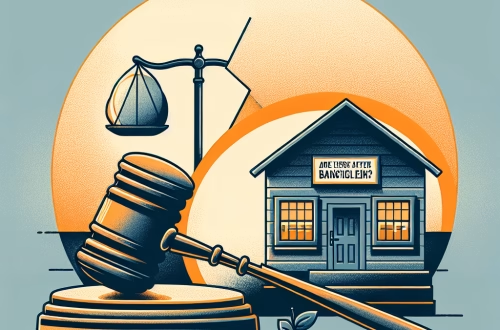How Do I Compare Different Mortgage Offers?
Summary:
Comparing mortgage offers is critical for securing favorable loan terms that save borrowers thousands over the loan’s lifetime. Homebuyers, investors, and business owners must evaluate interest rates, closing costs, loan flexibility, and lender reliability to avoid predatory loans or missed savings opportunities. With mortgage rates showing volatility in 2024 and lenders rolling out competitive products, strategic comparison helps lock in lower payments, qualify for specialized programs, or secure asset-based financing. This guide simplifies complex financial calculations and industry jargon into actionable insights tailored to each borrower type.
What This Means for You:
- Immediate Savings: Compare Annual Percentage Rates (APR) to identify true loan costs, not just attractive headline rates
- Long-Term Security: Analyze fixed vs adjustable-rate tradeoffs based on your income stability and homeownership timeline
- Hidden Cost Avoidance: Scrutinize lender fees tables for origination charges, discount points, and prepayment penalties
- Market Alert: With projected Fed rate cuts in late 2024, ARM loans deserve fresh evaluation despite historical caution
Explained: How Do I Compare Different Mortgage Offers
A mortgage represents a legal agreement where a lender provides funds for property acquisition secured by the real estate itself. Core comparison components include: 1) Principal & Interest – the base loan amount and cost of borrowing, 2) Loan Term – typically 15 or 30-year durations affecting monthly payments, and 3) Collateral Requirements – how property valuation impacts loan-to-value ratios. In today’s market, 28% of mortgage applicants fail to compare multiple lenders according to CFPB, potentially overpaying by $1,500 annually on average.
The mortgage application process includes mandatory federal disclosures that enable direct comparisons. The Loan Estimate form (provided within 3 days of application) standardizes interest rates, monthly payments, and closing costs across lenders. Closing Disclosure documents, received 3 days before settlement, finalize these terms. Smart borrowers analyze these forms side-by-side, paying special attention to Section A (origination charges) and Section J (calculations of cash required at closing).
Market conditions dramatically influence viable strategies. When inventory is low (as in early 2024’s 3.8 months supply), locking rate discounts via upfront points becomes valuable. For investment properties, lenders typically require 20 = 25% down payments and higher credit minimums. Business owners seeking commercial mortgages face distinct underwriting emphasizing debt-service coverage ratios (DSCR) above 1.25.
“How Do I Compare Different Mortgage Offers?” Types:
Fixed-Rate vs ARM: 30-year fixed mortgages offer predictable payments in exchange for higher initial rates (avg 6.87% May 2024). ARMs like 5/1 or 7/1 hybrids provide temporary rate reductions (currently 6.12%) but carry adjustment risks after 5-7 years. Current ARM applicants should verify rate caps ensure payments stay affordable if indexes rise.
Government-Backed Loans: FHA loans (3.5% down, credit scores 580+) help first-time buyers but require lifetime mortgage insurance. VA loans eliminate down payments for veterans but charge funding fees. Conventional loans through Fannie/Freddie demand higher credit (620+) yet offer lower long-term costs when putting 20% down to avoid PMI.
Non-Conforming Options: Jumbo loans address high-value properties (above $766,550 in most areas) with strict credit/asset verification. Investor-specific loans often feature interest-only periods covering 7-10 years to improve cash flow. Portfolio loans (held by lenders vs sold) provide underwriting flexibility for complex income situations like self-employed borrowers.
Requirements of “How Do I Compare Different Mortgage Offers?”:
Standard eligibility comparisons:
- Credit Scores: FHA (580+), Conventional (620+), Jumbo (700+ commonly)
- Down Payments: VA/USDA (0%), FHA (3.5%), Conventional (3-20%), Investment (20-30%)
- Debt-to-Income (DTI): Most programs cap DTI at 43%, though Fannie Mae’s Desktop Underwriter may allow 50% with compensating factors
- Asset Reserves: Jumbo loans often require 6-12 months of payments in liquid accounts
“How Do I Compare Different Mortgage Offers?” Process:
1. Pre-Approval: Submit basic financials (credit, income, assets) to receive conditional commitments from multiple lenders. This establishes bargaining power with sellers and reveals rate/fee differences early. Optimal timeframe: 4-6 months before home shopping.
2. Application & Disclosures: Complete full Form 1003 applications with each contender. Send W-2s, tax returns, and bank statements simultaneously to ensure time-bound Loan Estimates share common rate lock windows.
3. Underwriting & Appraisal: Lenders order property valuations and verify application data. Responsive document submission prevents delays. Investors should confirm if comparable sales approach or income capitalization appraisal methods apply to rentals.
4. Closing Coordination: Compare final Closing Disclosures for discrepancies versus initial Loan Estimates. >10% increases in settlement services fees may signal lender violations requiring redress. Schedule all signings within rate lock periods which currently average 45 days.
Choosing the Right Finance Option:
Rate Analysis: Evaluate both note rate and APR. Calculate breakeven points on discount points – paying 1% upfront for 0.25% rate reduction only saves money if keeping the loan beyond 4 years typically. Business owners should correlate loan terms with their industry cycles (e.g., avoid 5-year balloons in seasonal businesses).
Lender Reliability: Check NMLS licensing, CFPB complaint databases, and turnaround time promises. Local banks may offer portfolio loan flexibility while online lenders provide aggressive rate pricing. Mortgage brokers can compare wholesale offers unseen by the public.
Red Flags: Avoid lenders who refuse written estimates, pressure ARMs without adjustment projections, or claim credit/income issues prevent alternative offers. Bait-and-switch tactics manifest as changed terms between Loan Estimate and Closing Disclosure.
People Also Ask:
How many mortgage offers should I compare?
Minimum 3 offers from diverse sources (bank, credit union, online lender), though 5-6 maximize savings. CFPB research shows getting 4+ quotes saves average borrowers $600 annually.
Can comparing mortgage offers hurt my credit score?
No, if done within 14-45 days, credit bureaus count multiple mortgage inquiries as one. Coordinate applications tightly to avoid score impacts.
What’s more important: interest rate or closing costs?
Depends on ownership duration. Use online calculators to compare total costs (rate + fees) over your expected holding period.
How fast do mortgage offers expire?
Rates locks typically last 30-60 days. Loan Estimates remain valid for 10 business days from issuance unless material financial changes occur.
Extra Information:
CFPB Mortgage Tools – Official Loan Estimate comparison guides
MortgageCalculator.org – Custom payment scenario modeling
NerdWallet Rate Tracker – Real-time lender rate comparisons
Expert Opinion:
Systematically comparing mortgage offers remains the most underutilized financial leverage available to borrowers. Those investing 5-10 hours reviewing terms across multiple channels typically secure rates 0.25%-0.75% lower than single-quote applicants, translating to $15,000+ savings on median-priced homes across a loan term. This process proves especially critical for investors targeting cash-flow positive properties where basis point improvements directly amplify ROI.
Key Terms:
- mortgage rate comparison strategies 2024
- how to evaluate loan estimate forms
- comparing fixed vs adjustable rate mortgages
- small business owner mortgage requirements
- investment property loan terms comparison
*featured image sourced by Pixabay.com
Automatic Mortgage Calculator
Welcome to our Automatic Mortgage Calculator 4idiotz! Please just add your figures in the correct sections below and the Automatic Mortgage Calculator will automatically calculate the results for you and display them at the bottom of the page.





